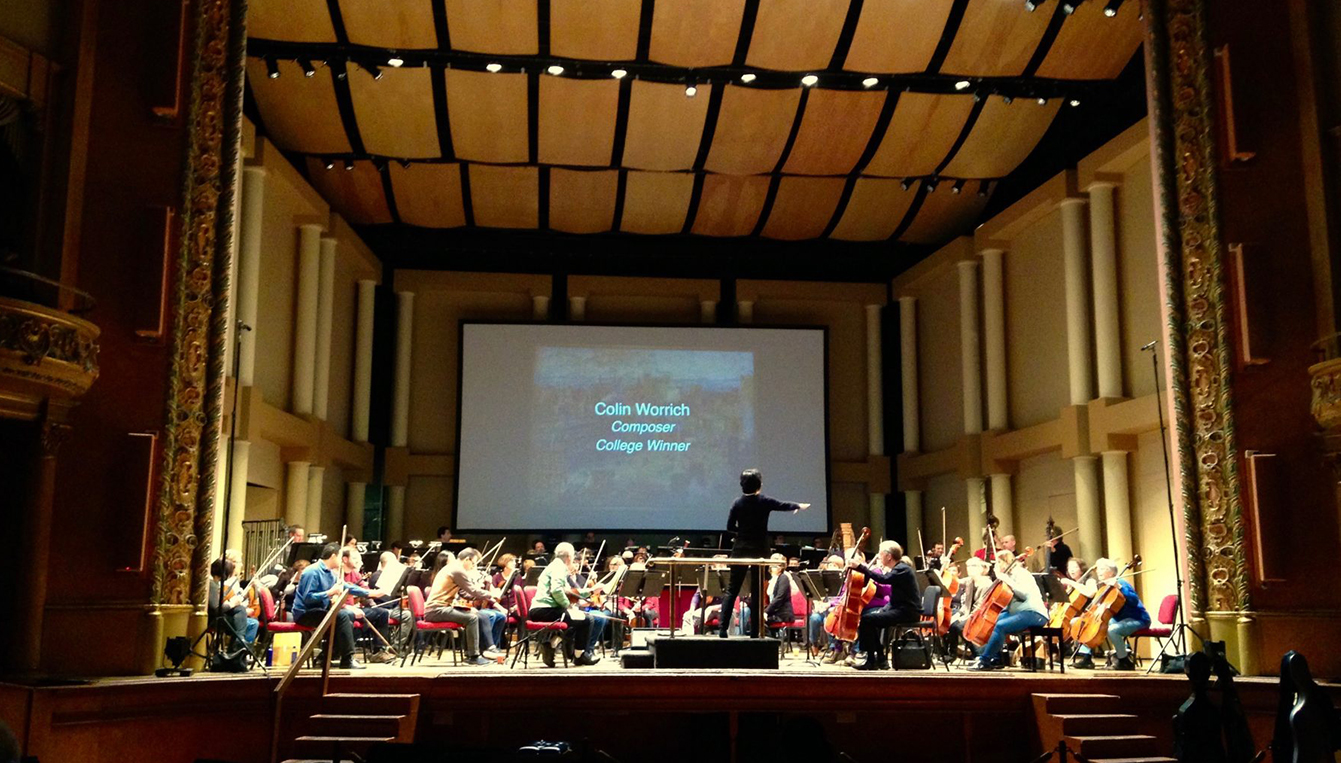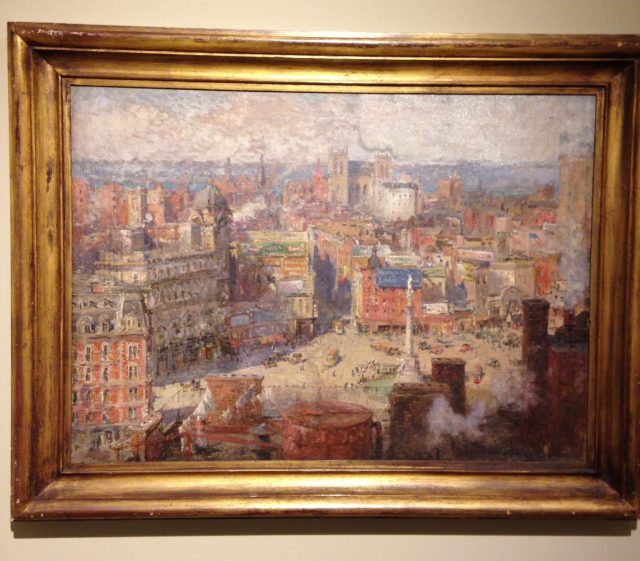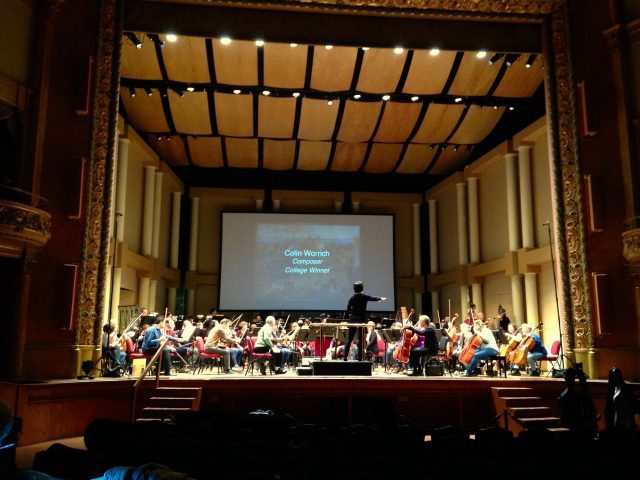Colin Worrich
Senior Consultant

One of my most pleasant surprises of 2018 came after submitting an original piece of music to the Allentown Symphony Orchestra’s “Pictures at an Exhibition” contest, which called for short orchestral pieces based on artwork in the Allentown Art Museum. Needless to say, I was thrilled to learn that my piece, based on Colin Campbell Cooper’s painting Columbus Circle, NY, had been selected for performance in two of the Allentown Symphony’s concerts.

Campbell’s Columbus Circle, NY painting: the inspiration for my orchestral piece.
Cooper’s painting provided plenty of inspiration – its whimsical depiction of early 20th century life in New York City comes complete with horse-drawn carriages, automobiles, streetcars, and the faint suggestion of steamships on the distant Hudson River. To depict this musically, I gave each of these modes of transportation its own motif, drawing inspiration from the rich American orchestral heritage of dancing woodwinds, noble strings, and bold brass. Take a listen to this computer audio mock-up of the piece:
After telling my colleagues at Acentech the exciting news, I of course had to answer a ton of questions related to acoustics. One of the questions stuck out:
“Did you think about the concert hall when writing the music?”
Truthfully, I did not, and maybe I should have. It’s not like I was a stranger to the venue – the ASO’s home, Miller Symphony Hall, is a ten-minute drive from where I grew up.
Having my composition premiered by a live orchestra was an incredible experience. I was touched by the enthusiastic comments that I received, amazed by the works of the other winning composers, and dazzled by the fantastic performances of Maestra Dianne Wittry and the ASO. Candidly, though, hearing my piece live made me wonder if I relied a little too much on my composing software’s sampled instrument sounds.
No one will argue that when a full orchestra is worked up in a frenzy, the results are infinitely better than anything software could ever replicate. However, a great ensemble sound that fills up a space like Miller Symphony Hall can sometimes be a detriment, especially to those players trying to make important solo or melody lines heard. In my computer sample world, where every member of the ensemble is mixed at roughly the same level, instruments that are naturally quieter shine through just fine. In the real world, where large numbers of string players and strong directional voices like trombones and trumpets dominate, they need some help from the composer’s choices in orchestration.
This is especially true for ASO members playing at Miller Symphony Hall, which has an adjustable and detached orchestra shell consisting of 9 movable walls and 27 suspended acoustic reflection panels. Not only do players towards the back of the orchestra have to compete with the army of strings at the front, but also with sound energy loss to the wings and rafters through the gaps in the stage enclosure.

The result? Everyone could bask in the brassy glory of my piece’s ending, but some of the finer details – an important clarinet melody, a fluttering flute line, an off-kilter oboe solo – got somewhat lost in the mix.
This is no criticism of Miller Symphony Hall – in another (much less bombastic) composition, a warm harp solo from the back of the stage cut through to the audience beautifully. It’s also certainly no criticism of the Allentown Symphony Orchestra, who did a marvelous job with what they had to work with. Instead, I think it’s up to the composer (cough, cough) to thin out the musical texture and make sure that their more delicate musical ideas get heard when they need to be.
And, of course, it just goes to show that you should ALWAYS be thinking about acoustics.